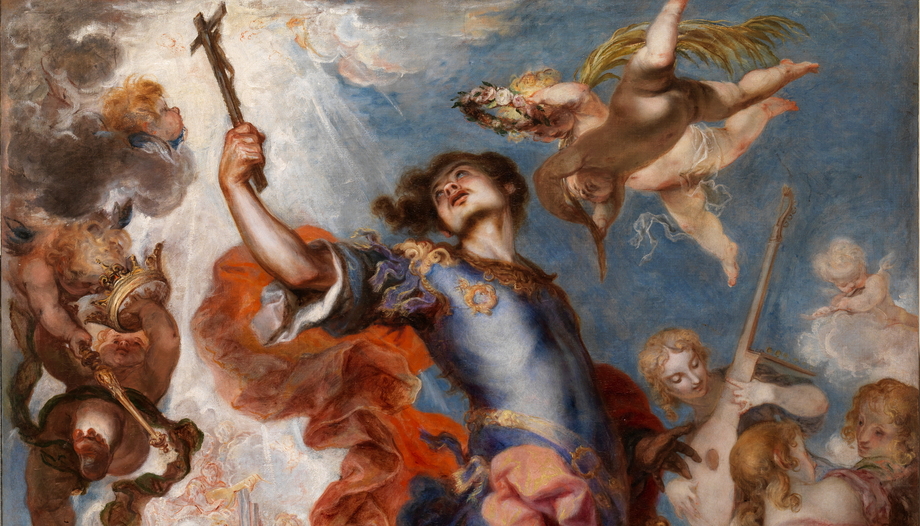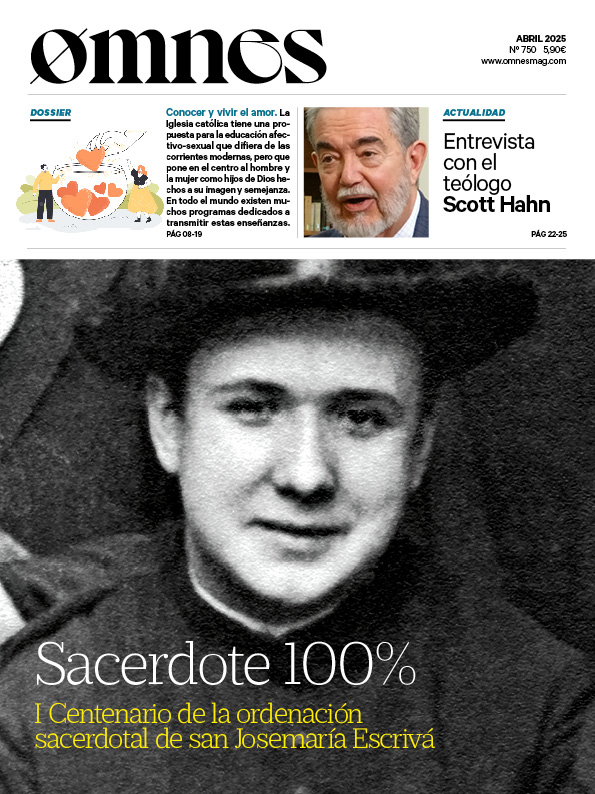Toledo has been the Primate See of Spain from the time of the Visigothic Church to the present day, that is, from the precursor, the conversion of St. Hermenegild martyr and, consequently, with the coronation of Recaredo, his successor, as the first Catholic king in Hispania.
In the works of Christopher Dawson and José Orlandis, the great European medievalists of the twentieth century, it was sufficiently established that the conversion of the new nations to Christianity, after the barbarian invasions, would take place as a result of the conversion to Christianity of the respective monarchs. Once the head was incorporated into the Church, it was natural that his nobles and the people would follow him.
Basically, it was to reproduce the system of Constantine's conversion in 313 when the Church ceased to be persecuted and obtained a charter of nature and was able to return to work and serve souls normally and naturally.
Evidently, in both cases, the Church was in danger of being manipulated by the State and dominated by Caesaropapism and of applying civil power to the life of the Church. Once again, the Holy Spirit protected in many moments that nascent Church or that had regained the ability to serve all souls.
Slow evangelization
Logically, history has shown that the new evangelization of those lands and valleys was very slow because the Visigothic nobles did not act in unison, like those of other nations, and every time a king died, the problem of succession was reproduced again until the new king was admitted by the nobles of the kingdom.
Likewise, the Arian Church did not easily yield its influence on the kings and nobles and it can almost be said that the conversions took place province by province and valley by valley. In fact, the rapid spread of Islam in the Iberian Peninsula was undoubtedly due to the fact that in many places the inhabitants preferred the yoke of Islam, which did not believe in the divinity of Jesus Christ with all that this implied, to conversion to Christianity and dependence on the new lords.
The conversion of the Visigothic people was indirectly favored by King Leovigild (573-586), who tried to bring about national and religious unity around Toledo and the Arian religion, with these two objectives he intended to turn Hispania into a strong and culturally powerful nation.
From the 6th century until the end of the 20th century, the intellectual center of the Iberian Peninsula became the religious and cultural core of Spain, from where Leovigild (573-586) would later attempt to consolidate the new national unity.
The Catholic nobles of Spain
Leovigild discovered that in order to carry out the fusion of such different and varied peoples in such a vast territory, he needed to rely on the Catholic nobles, generally endowed with a greater spirit and culture than the Arians.
These data support the sources to show that in reality the dominion of the Visigoths in many parts of Hispania was a political dominion and by force of arms, since the cultural and religious power was much greater among the descendants of the Romans who had survived the invasion. One more proof that the Visigoths, far from destroying the previous civilization, had been defeated, subjugated and molded by that civilization that so dazzled them and that they had not been able to annihilate.
King Leovigild was a convinced Arian and tried to get the Christian nobles, through pacts and alliances, to convert to Arianism with the clergy and the Christian people. On the other hand, he was immediately aware that he was surrounded by the Franks, the Suevi and the Byzantines of the south of the Peninsula, all of them Catholics and enemies of the invading Arians.
Finding complete opposition to his plans in neighboring towns and within his own, he tried to achieve this through threats and violent persecutions which, as we shall see below, inflamed the Christians in the defense of their traditions.
Saint Hermenegild, martyr
The opposition of the Christian nobles was joined by that of the bishops, especially that of Masona, metropolitan bishop of Merida, in a deeply Christian region of Hispania, with very ancient traditions and the veneration of martyrs and saints such as St. Eulalia. He was also joined by St. Leander, the archbishop of Seville, another of the great churches since Roman times.
Masona, particularly loved by the Christian people, was banished to the north of Hispania due to the intrigue of the Arian bishops, while St. Leander managed to make himself strong in Seville and resist. Let us not forget that he came from a Byzantine family settled in Cartagena from where he had moved to Seville. In 578 he was named archbishop of the city and in a few years he took charge of the archiepiscopal see. He managed to bring together all the authorities around him, for the cultural, economic, artistic and educational prestige.
St. Leander connects in Seville with Hermenegild, the son of Leovigild to whom his father entrusts the government of Baetica. Leovigild's attempts to have his son Hermenegild (564-585) neutralize the work of the archbishop were turned upside down, as both Hermenegild and his wife Ingunda (+579), who was Catholic and belonged to the Frankish nobility, began to support the archbishop's ideas and were fully committed to spreading them throughout the province. Finally, Hermenegild was baptized on April 16 and became a Christian.
The problem was that Hermenegild, surely deceived by his advisors, took up arms against his father, aided by a good number of Catholics; by the Suevi, from the north who had recently converted, and by the Byzantines, who occupied the province of Carthage. Shortly afterwards he was defeated and captured by his father who tried to force him to apostatize from the faith.
Difference of opinion
The chronicles of the time do not coincide in their opinions. For example, the monk Juan de Bíclaro, also called the Biclarense, speaks of "rebellion and tyranny". St. Isidore has words of praise for Leovigild for having subdued his son, "who tyrannized the Empire"; and both lament the great evils that the war brought about for both the Goths and the Hispano-Romans.
The fact is that Hermenegild was taken prisoner. He was taken first to Valencia and then to Tarragona, where in 585 he was executed for refusing communion at the hands of an Arian bishop. Undoubtedly, with his martyrdom he eliminated any possible guilt, and soon the people began to venerate his memory. His cult was later confirmed by the Roman Pontiffs, and he was canonized on April 15, 1585, a thousand years after his martyrdom. His feast day is celebrated on April 13.
Perhaps, remorse, the heroic gesture of resistance or the evident failure of his unification policy led the Visigothic king Leovigild to a better understanding in his last days. According to the "Chronicle" of Maximus of Saragossa, Leovigild would have embraced Catholicism before his death and recommended St. Leander to work for the early conversion of his other son and successor, Recaredo. But neither St. Isidore nor the Biclarense speak of it and the "Life of the Emeritan Fathers" continues saying that he died in Arianism.
Recaredo, first Catholic king of Spain
The reign of Recaredo was described by the chronicles of the time as a time of peace and unity for the Visigothic people, since with his conversion to Christianity and his appointment as king the Christian monarchy of Hispania would join those of France and other nations to open the Europe of nationalities that would lead to medieval Christendom, as it would be known from the "Isidorian era".
Undoubtedly the supporters of the union of the "throne and the altar" that would bring so much suffering to the Church through the ages, have seen in this time their founding moment. We know that the union was not full, logically because the State and the Church have their distinct spheres and their completely different means of governing.
On the other hand, the Christianization of Spain and religious unity was never complete and even less so at that time, since the Arians, reluctant to convert, communicated with the Muslims who also deny the divinity of Jesus Christ.
In 587, Recaredo gathered the Arian bishops and proposed to them plain and simple conversion. The fact was that quite a few did so and the rest were not banished but stripped of the support of the state. In fact, the scarce material means at the king's disposal were used to develop and build Catholic temples in the places where the bishop refused to convert. This produced some uprisings, which obeyed more to political reasons than to religious causes.
Council of St. Isidore
When Pope St. Gregory the Great learned of Recaredo's conversion, like other monarchs in similar cases, he sent him a precious letter: "I am not able to express in words how much I rejoice in your life and works. I have learned of the miracle of the conversion of all the Goths from the Arian heresy to the true faith, which has been accomplished through your excellency. Who will not praise God and love you for it? I never tire of telling my faithful what you have done and of admiring myself with them. What will I say on the day of judgment if I arrive empty-handed, when you will carry an immense crowd of the faithful after you, converted by your solicitude? I do not cease to give thanks and glory to God, because I share in your work, rejoicing in it".
The Biclarense draws a parallel between the king of the Visigoths, Recaredo, and the Roman emperors, Constantine and Marcian: as they did, he not only converts himself, but also brings with him the conversion of the peoples of his own Germanic lineage.
St. Isidore's advice consisted above all in not forcing the conversions of the bishops, priests and the Arian people; it was enough for him to live his own faith and hope that, with the fullness of revelation and the consequent happiness, many others would be converted.









